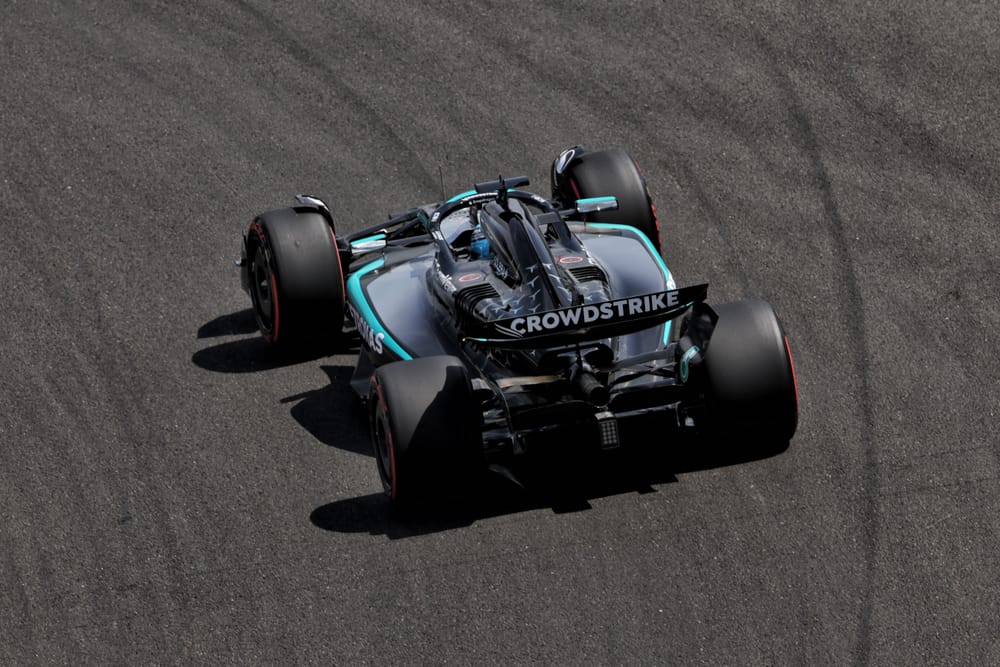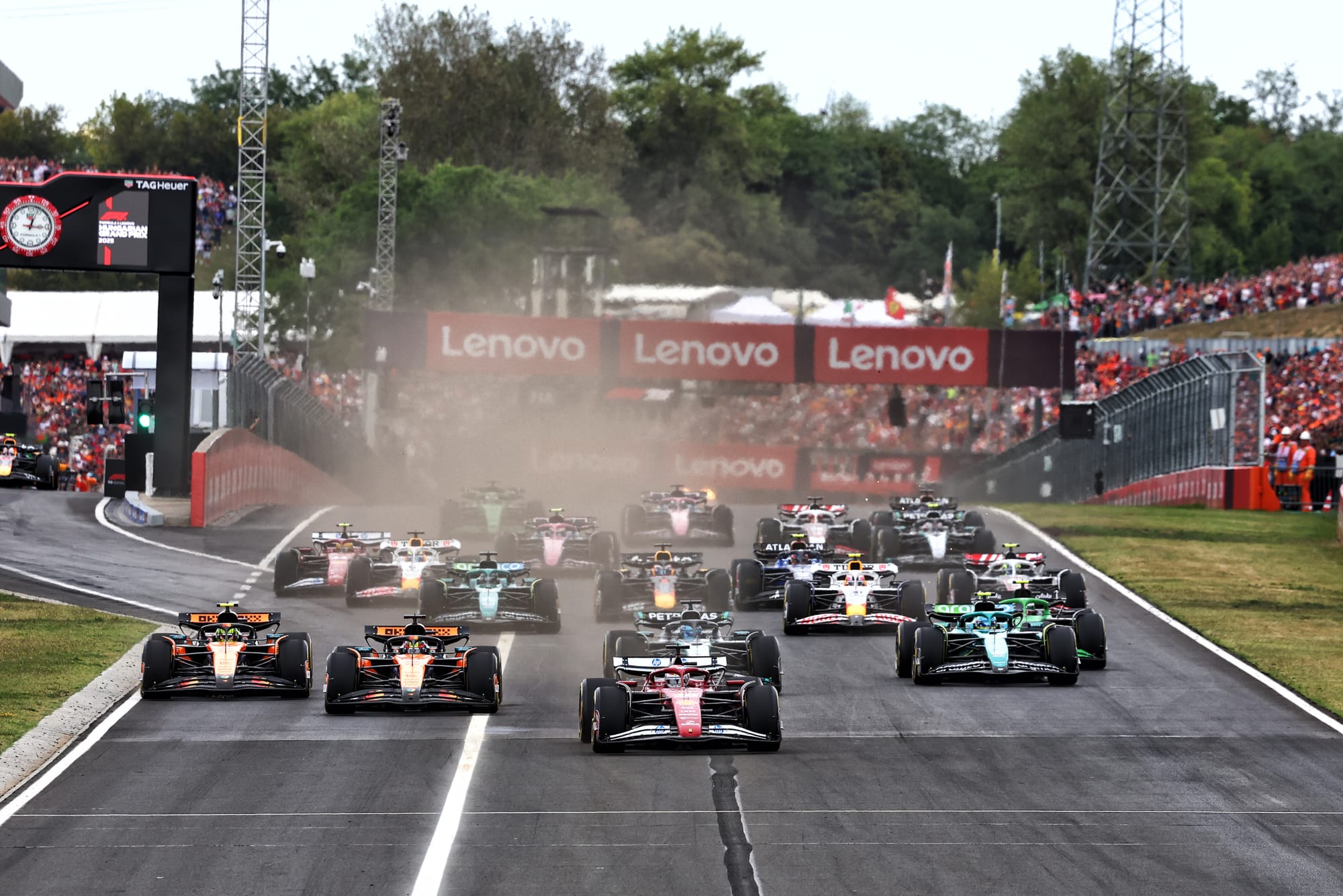Mercedes team principal Toto Wolff expects the rear suspension update originally introduced for the Emilia Romagna Grand Prix in May to end up "in a bin" after the Formula 1 team's form improved in Hungary, where it reverted to the old specification.
George Russell finished third in the Hungarian GP after overtaking an ailing Charles Leclerc in the closing stages. He felt dropping the rear suspension, which improved the anti-lift characteristics but "clearly wasn't performing as we'd have hoped", allowed Mercedes to show its strongest race pace this year outside of its victorious Canadian GP.
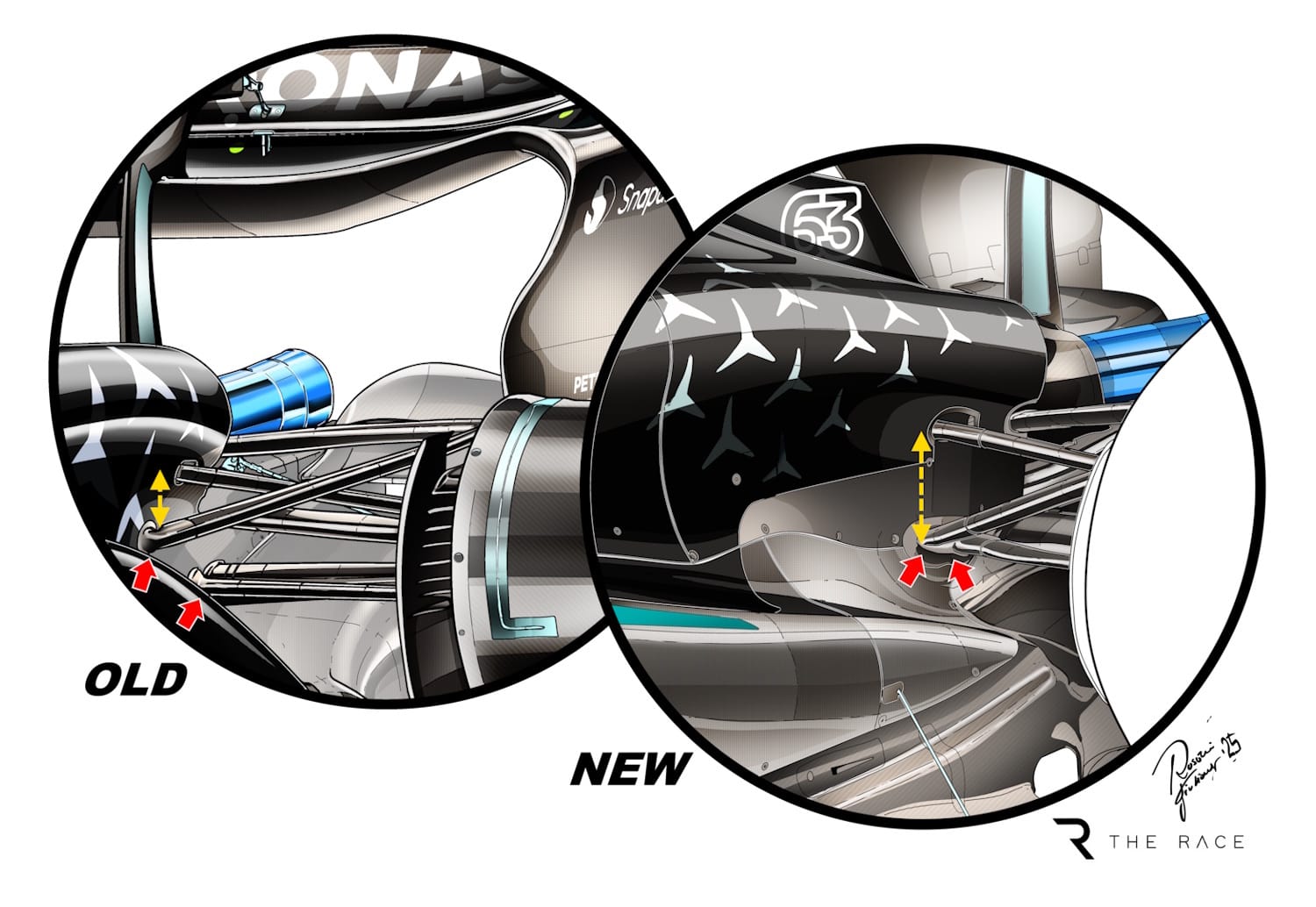
The rear suspension initially ran at Imola in mid-May, then was dropped for the following two races of the triple-header in Monaco and Spain amid uncertainty about its performance. The rear suspension returned for Montreal and was used in the ensuing run of races but with both Russell and Kimi Antonelli finding it made the car unstable and harder to drive with confidence.
That’s why, speaking after the race in response to the question about whether the rear suspension would come back, Wolff said "that rear axle will be ending in a bin somewhere, I guess". He also explained why it had taken so long for Mercedes to get to the bottom of the problem.
"We tried to solve a problem with the Imola upgrade and that may have solved an issue, but it let something else creep into the car," said Wolff. "That was an instability that basically took all confidence from the drivers.
"It took us a few races to figure that out. Obviously, we were misled a bit by the Montreal win; you think maybe that's not so bad. We came to the conclusion it needed to come off, it went off and the car's back to solid form."
The rear suspension was the only part of the recent upgrade programme that Mercedes rolled back on at the Hungaroring, meaning that the improved form can be ascribed to the change with reasonable confidence. The team believes that the speed range of the Hungaroring would expose entry instability problems, meaning the weekend performance is unlikely to have been a 'false positive', and the driver feedback suggests that was no longer a problem.
As trackside engineering director Andrew Shovlin explained before Friday practice began, the team had never been completely confident in the performance of the rear suspension tweak. However, given the track characteristics, conditions and other confounding factors it took time to pinpoint its problems and take action.

"It's always been on the radar," said Shovlin when asked by The Race at what point the concerns arose. "One of the inconvenient facts was that that was on the car in Montreal, where we had a very, very good weekend.
"That circuit is very different to some of the recent ones, but if we looked over the past three tracks [Red Bull Ring, Silverstone, Spa], high-speed performance hasn't been where it was. The drivers talked about lacking entry stability and just this general sense that they didn't have the trust in the car that they did earlier in the weekend.
"With the wet races that we've had, perhaps arriving at that conclusion wasn't as swift as if we'd had a straightforward run of dry races and dry sessions. And then on top of that we had other set-up experiments that we were playing with around the time of Montreal and Austria. But we were starting to get to a stage where the next logical thing is wind back on that change and see if we can recover that stability that they are craving."
Shovlin also referred to "some issues in some of the laboratory work that we were doing that meant some of the test results were arriving quite a bit after it had run on track". That’s another factor that explains why it has taken Mercedes so long to commit to rolling back the specification, and Shovlin stressed that such data is still being analysed to draw definitive conclusions.
Although the problems will be a valuable learning experience for Mercedes, deep understanding is drawn from such problems and Shovlin is confident "it will be useful in our knowledge of making the next car". This is the latest difficulty the team has encountered since the current ground-effect regulations were introduced in 2022, meaning this development misstep is part of a pattern that has frustrated the team for some time.
In the three and a half years since the rules changed, Mercedes has only ever been an occasional winner (it has six since the start of 2022) and suffered too many false dawns. Also, when decisive progress has been made, this hasn't been sustained enough to get it back to the front consistently.
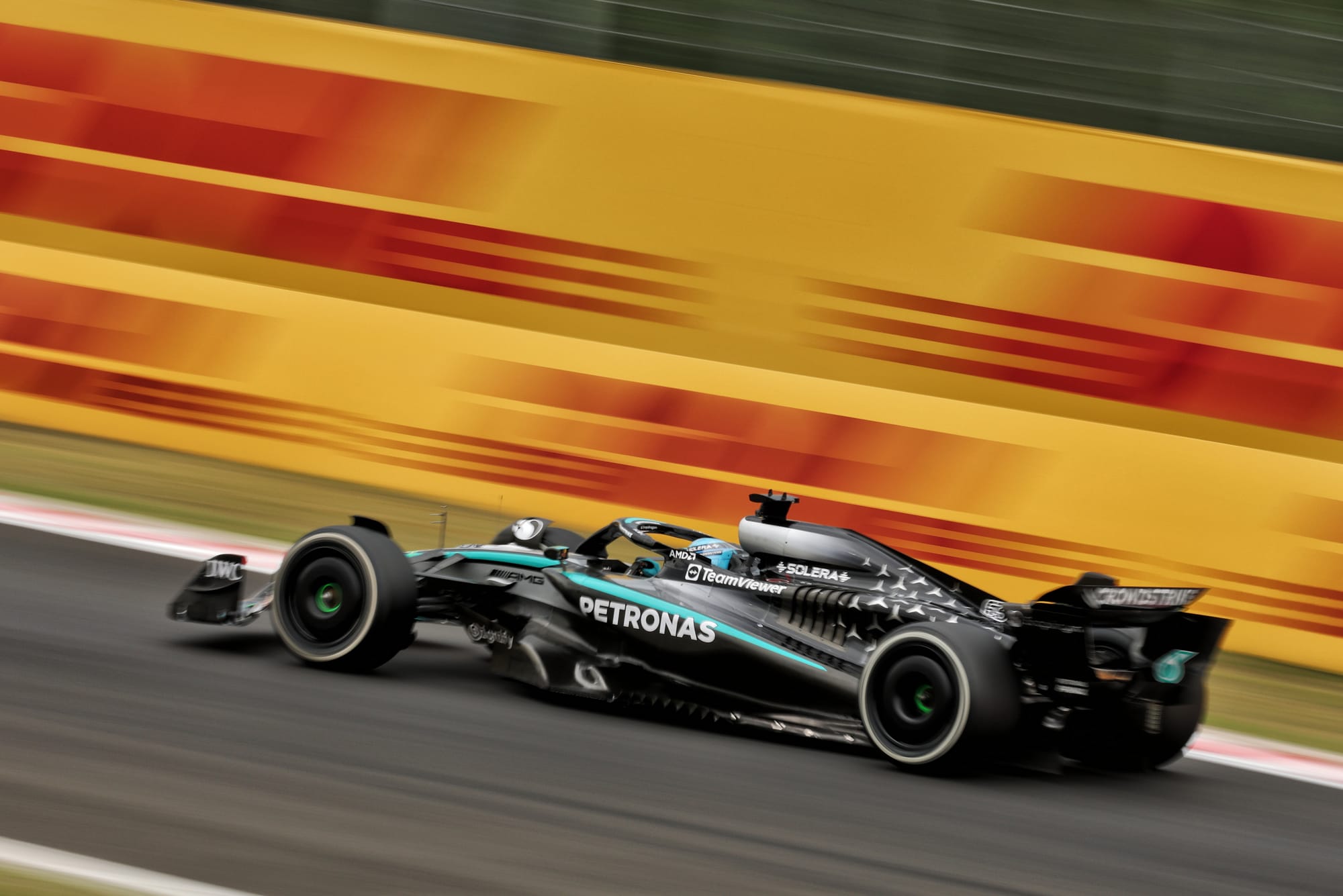
When The Race put it to Wolff that despite the breakthrough of realising the rear suspension upgrade had caused stability issues, this shows there are continuing problems with the tools used to produce such designs, he agreed.
"You're right, because upgrades are here to bring performance and there's a lot of simulation and analysis that goes into putting parts on the car," said Wolff. "Then they're just utterly wrong and you need to go back to the analogue world and put it on the car and see what it does and it doesn't do what it should do.
"That's the tricky bit for everyone in Formula 1: how do you bring correlation from what the digital world tells you into the real world? That has been a feature [of Mercedes in recent years] and this is the last example of how it tripped us over."
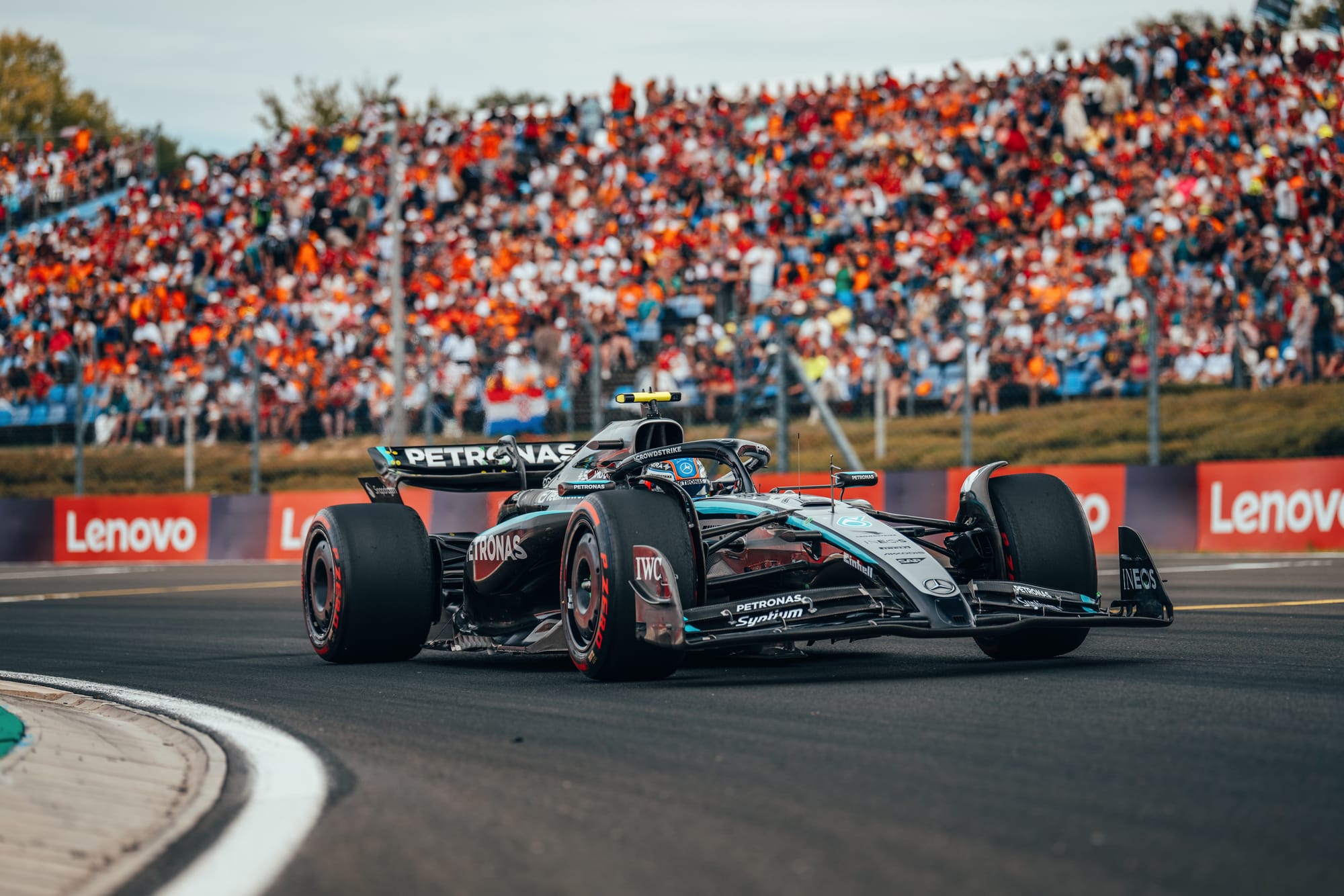
Mercedes has long since switched its development focus to the all-important 2026 car that it hopes will catapult it back to the front in F1. The team says further new parts are not expected, but the hope is that regaining stability and driver confidence will allow it to fight for good results.
"There’s no more upgrades," said Wolff. "Everything is completely focused and concentrated on next year.
"Now we know that we have a more stable platform that's going to give us some goodness. Let's see how we can optimise tracks in terms of finding the right set-ups and then be as competitive as we can."


